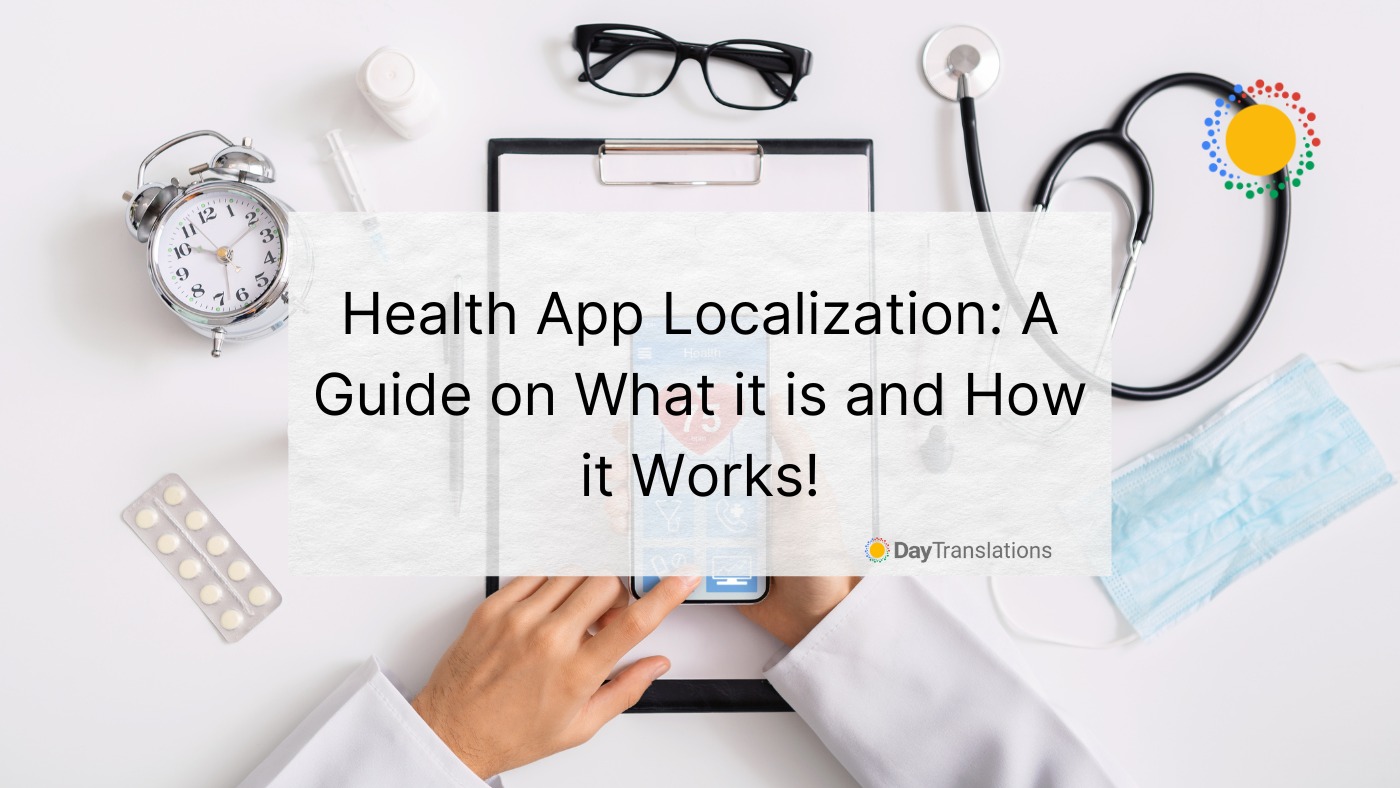Just about every industry out there now has mobile apps that allow their customers to get things done on the go. And the health sector is probably a leader in this field. Health apps have gone global, offering customers across the world an easy way of taking charge of their mental and physical health. However, without localization and translation, it wouldn’t have been possible for these apps to be as successful as they are today.
From language translation apps searching for medical services near you to the internet and mobile apps that ensure you get your medication on time, every time, the world is evolving at a rapid pace! Nowadays, health care workers rely on mobile health apps to improve everyday clinical communication in treatment and care planning.
The Scoop on Health Apps
Whether it’s accessing medical information or booking a doctor’s appointment, the health industry has launched a bunch of helpful apps in the market. The rise in health tech aims to provide everyone with access to affordable and quality healthcare solutions. Here’s a look at the kind of apps currently available in the niche:
- Appointment booking apps
- Apps that allow you to resolve medical concerns with doctors via chat
- Finding information about medicines, symptoms, and dosages via apps
- Apps that help you maintain your mental health
- Meditation apps
- Women’s health apps that help women track their periods, pregnancy progress and raise awareness about female-specific illnesses
- Fitness apps for various types of exercises
- Weight loss apps
- Diet apps
The Deal on Mobile App Localization
Accessibility is the primary goal when it comes to globalizing your mobile app, and that’s why you cannot ignore localization. When you localize your app, your users will be able to navigate your app in their native language and consume content that’s culturally appropriate.
Technology Enabling Language Translation
An excellent example of proper localization is the Pacer app. Pacer is essentially a pedometer and exercise tracking app. It has a bunch of great features, including personalized fitness plans, a step counter, guided workouts, and a thriving, supportive community forum. It wasn’t until the development team noticed a surge in downloads from Russian users (more than 3.57% of their daily downloads were from Russians) that they decided to optimize their offering to the Russian market.
The Evolution of Mobile Medical Translation Apps
But Pacer was still in the start-up stage. So they didn’t necessarily have the funds to launch an extravagant campaign for the Russian market. Budget restraints led them to hire a student to translate their existing content into the Russian language. But the quality was substandard. After receiving enough negative feedback, the Pacer team decided to hire professional translators to redo the job.
The results?
Pacer climbed to number 7 (from way down at 102) in the Health & Fitness apps category and increased its daily downloads from 2.63% to 17.49%!
Wrapping Up Localization for Mobile Apps
Mobile app localization is relevant in just about every industry. The majority of consumers now turn towards focusing on their health and well-being. And this means there has never been a better time for health apps to localize their offerings.
With so many apps in the marketplace, it’s essential that brands do as much as they can to stand out from the crowd. Now more than ever, they must establish themselves as leaders in their niche. The best way to start building your community is by localizing your app to suit the needs of your users. If you don’t know where to start, we’re here to help! We’ll guide you through the process and set the stage for your global growth.
Get in touch with Day Translations today to learn more about our bespoke localization services that’ll help you reach markets beyond your wildest dreams!












Sorry, the comment form is closed at this time.